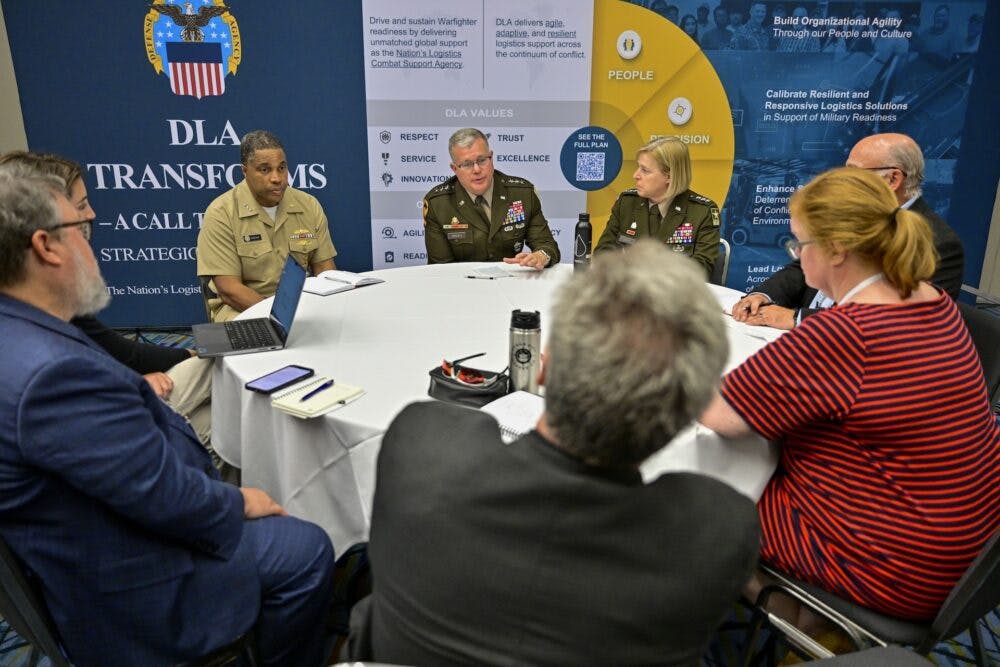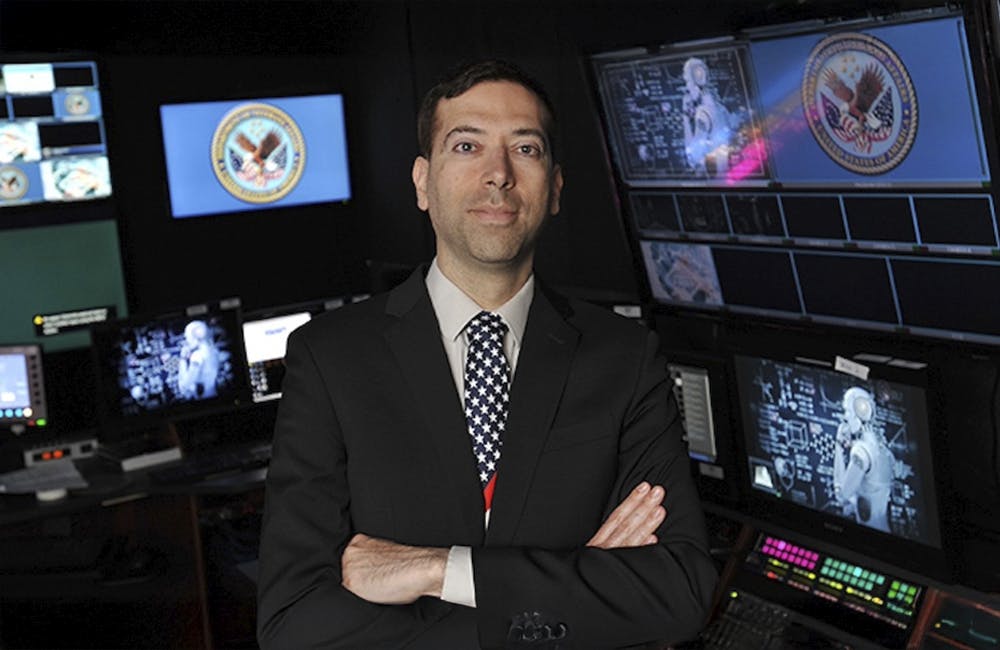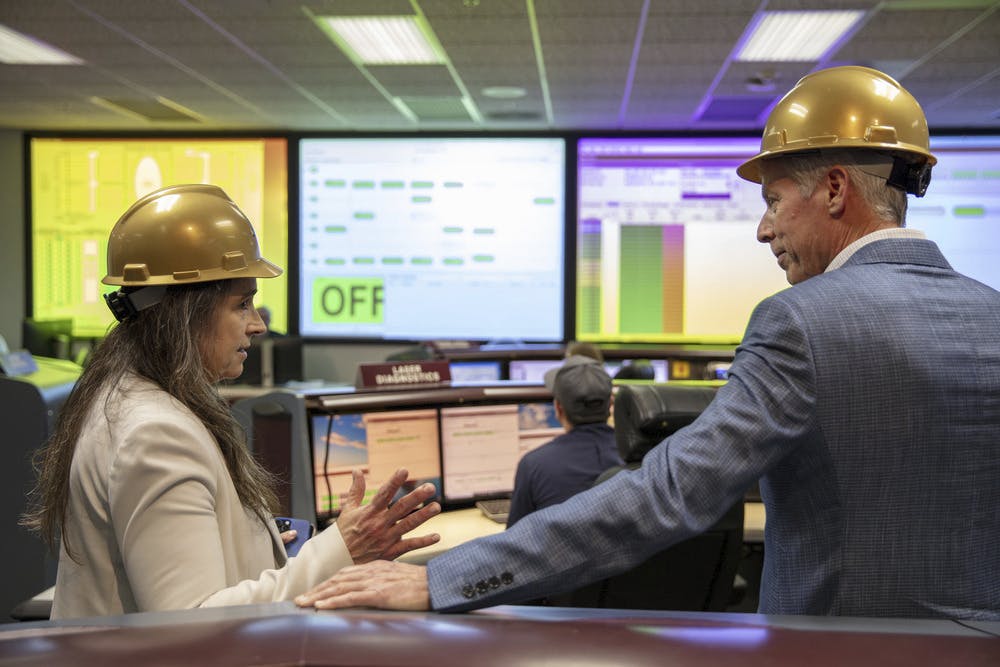Remember These Key Steps For Federal AI Adoption
Federal AI leaders share examples of groundwork around data management, training and culture.

Leaders across the federal government are trying to understand and leverage artificial intelligence and emerging technologies to drive the future of work forward. But before we rush toward a future with AI, experts in the field cautioned the importance of setting the technological and cultural foundations to prepare for AI.
Different agencies are in different stages of maturity with their data, AI and other emerging technologies, making early planning, piloting, managing risk and scaling important factors in paving a thoughtful future to AI, federal leaders said during an ATARC event Tuesday. Department of Health and Human Services Chief AI Officer Oki Mek stressed that even within his agency, there are different levels of data maturity, making risk management and cost overrun mitigation top concerns for him.
“Since HHS is so large, we are at different stages of this journey of emerging technology,” Mek said. “The business owners [are] acquiring and building AI, buying AI products and services. We just want to make sure that we do it responsibly. … We want to make sure that we have this ecosystem of support because AI, machine learning — it’s a new, innovative, transformative domain. … The failure rate is going to be high. In even just IT projects, the failure rate is quite high. But with good, new emerging technology, it’s going to be lower.
Mek and Navy Chief AI Officer Brett Vaughn also stressed that acquiring and preparing data to be ready for AI application is also a critical piece that agencies looking to adopt AI must work on.
“Changing the way we treat data, with AI in mind, as one of those enablers is, I think, a really, really important thing,” Vaughn said.
NASA Digital Transformation Lead for AI and Machine Learning Ed McLarney added that having modernized infrastructure in place can help set the modernized groundwork that agencies often need to make AI successful. Meanwhile, Department of Energy AI and Technology Director Pamela Isom said that embracing open-source capabilities can usher in better algorithm develop and data aggregation capabilities.
“There is just so much that is emerging in [the open-source] space, particularly around data aggregation and repositories of these algorithms, and then solutions that not only house algorithms, but also can help to parse the algorithms to make sure we’re getting them in the way that we need them so that we are mitigating the biases,” Isom said. “So there are technologies out there, and they’re coming through the open-source platforms.”
With the technological groundwork in place, the AI officials underscored that piloting AI projects is the next key step. McLarney shared that NASA has been developing AI prototypes and pilots for deployment systems, mission support, as well as research science engineering to create space craft and aircraft scientific instruments.
Federal Reserve Bank of New York Chief Data and Analytics Officer Laura Kurup added that the bank has matured a variety of AI pilots and is looking to scale them for operational usage.
“We’re working on moving form an era where we’ve delivered a lot of exciting pilots to making sure that those pilots are actually getting adopted into frontline activities in a way that we’ve expected,” Kurup said. “We’re looking at it as a three-legged stool — making sure that we have the focus on AI and machine learning, along with standards and policies and governance that are needed to unlock and enable some of these new use cases, along with having the technology and the tooling and data management.”
Kurup said that some of the projects the bank has been working on are called “lighthouse projects,” where her team brings in a new technological capability or technique to refine, champion and explore adoption across multiple use cases in the bank. From there, Kurup’s team clusters use cases to strengthen the capabilities’ applications to the banks’ needs.
To really develop and mature sustainable AI projects and models across agencies, the AI experts said that upskilling workers and creating a culture that enables collaborative AI adoption is another boon to making AI adoption take off. Mek — who is working on developing both an AI Council and community of practice within HHS — said that a lot of the skilling and learning comes from building fellowship around AI.
“We will make sure that we bring folks together and collaborate and share information, any best practices, lessons learned, any challenges or pitfalls that will help manage risks or lower the risk for a department, as well as avoid cost overrun,” Mek said. “It’s about education and training, as well as really just culture shift, culture change into more of a data, digital-centric culture.”
Developing a culture around AI isn’t just for those in IT. Once leadership has buy-in to technologies like AI and can work in partnership with AI developers and data analysts, the initial exploration of AI use cases and adoption becomes more focused and synchronized between leadership, customers and IT teams.
“Strategies need to be done in partnership — both between folks that know AI well, are familiar with the advanced data science, machine-learning techniques, how we can apply them, and then the folks who understand the business problems really well,” Kurup said. “Oftentimes the first round of use cases folks think of may not be the most interesting problems to solve and the most impactful areas where we can focus AI, so coming up with the characteristics of the type of challenge that we can solve well with AI within the agency and then looking for those in new places.”
This is a carousel with manually rotating slides. Use Next and Previous buttons to navigate or jump to a slide with the slide dots
-

DOI Must Modernize Energy to Win AI Race, Secretary Says
Doug Burgum links AI innovation to energy reform as DOI advances digital infrastructure and wildfire response under Trump’s tech agenda.
2m read -

NIST to Release New AI Cybersecurity Guidance as Federal Use Expands
NIST plans to release AI cybersecurity guidance within the year to support safe adoption as federal agencies expand use cases.
4m read -

CIA Adds Fourth Pillar to AI Strategy, CAIO Says
Lakshmi Raman says the new pillar marks a strategic shift toward embedding AI more deeply into the CIA’s day-to-day mission execution.
3m read -

FEHRM CTO Targets Two-Year Cloud Migration for Federal EHR
Lance Scott touts new EHR tech advancements, including cloud migration, expanded data exchange and AI integration to improve care delivery.
4m read -

AI Enables Coast Guard’s Workforce to Transform Operations
The Coast Guard’s Deputy CIO Brian Campo delves into the ways AI is pushing the service to rethink its core services, workforce and operations.
14m watch -

New Army Acquisition Plan Cites Autonomy, Predictive Analytics
Officials outline how the Army Transformation Initiative signals a broader shift toward efficiency with tech and acquisition reform.
4m read -

DOL Turns to Workforce Development to Maintain AI Superiority
DOL is bridging the AI skills gap through partnerships and upskilling to ensure future AI workforce readiness.
10m watch -

Trump’s Executive Order Spurs Federal Push for AI Literacy
Agencies are ramping up AI literacy efforts across the federal workforce and education systems after Trump's executive order on AI education.
5m read -

AWS Summit: A DOE National Lab Uses GenAI to Boost Efficiency
Lawrence Livermore National Lab launches a new generative AI tool to drive operational efficiency at the National Ignition Facility.
9m listen -

VHA’s AI Chief Led NIH’s New AI RFI
The agency's AI chief Gil Alterovitz helped develop a plan that hints at how NIH is charting the future of AI and biomedical research.
5m read -

DOE National Labs Launch New AI Tools for Operational Efficiency
The Energy Department's National Laboratories are using AI to increase operational efficiency and drive research efforts forward.
3m read -

White House AI Czar Outlines Industry's Role in Global AI Race
White House AI Czar David Sacks detailed the Trump administration's AI priorities and industry's role in growing the nation's AI economy.
3m read
















